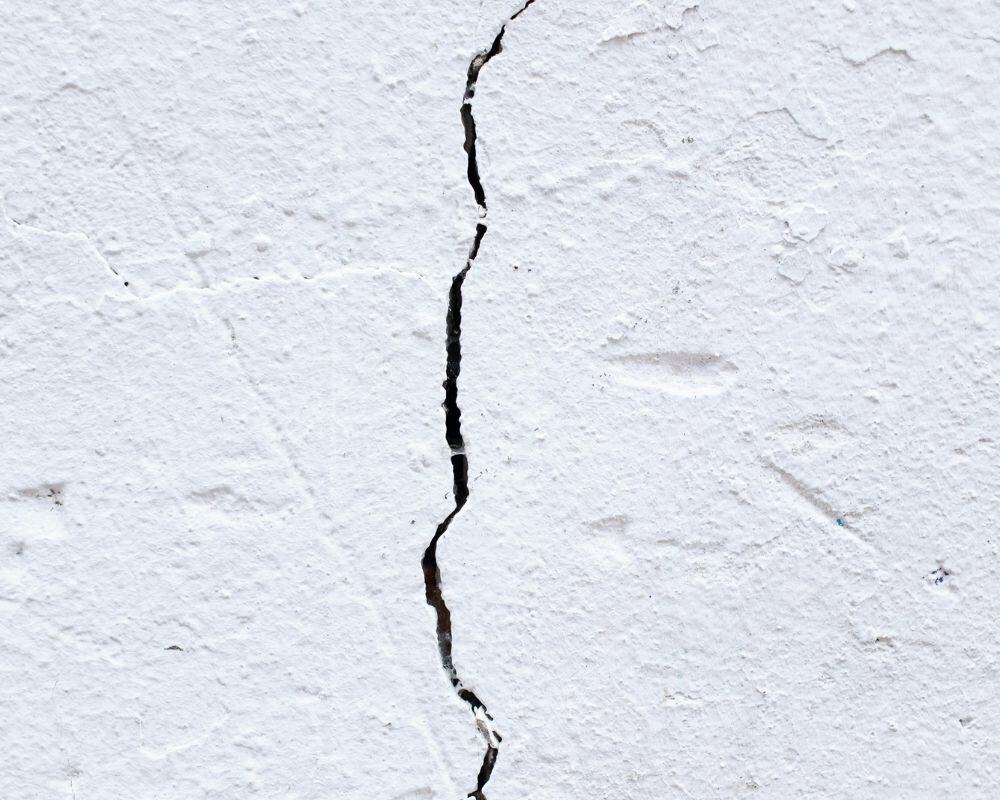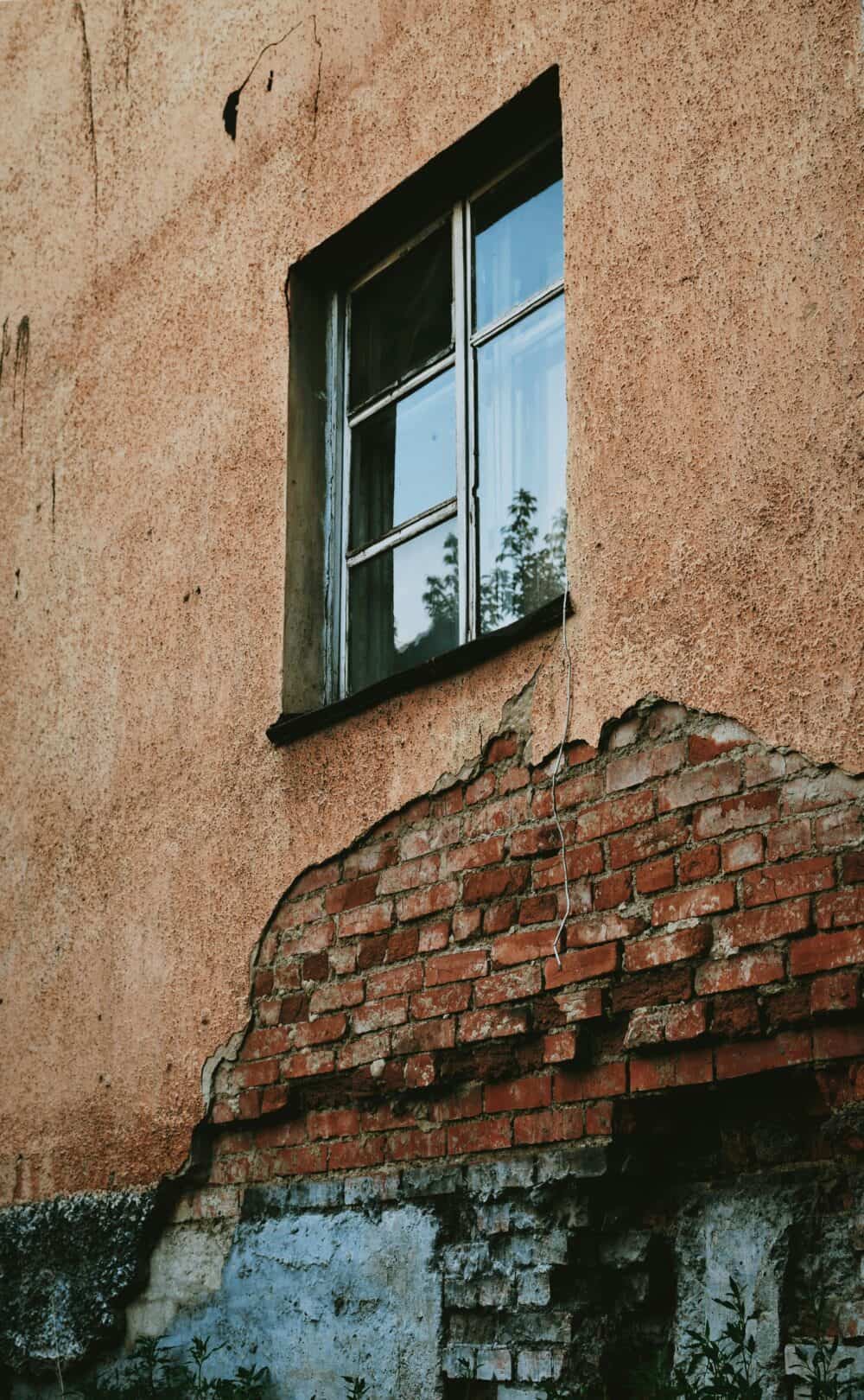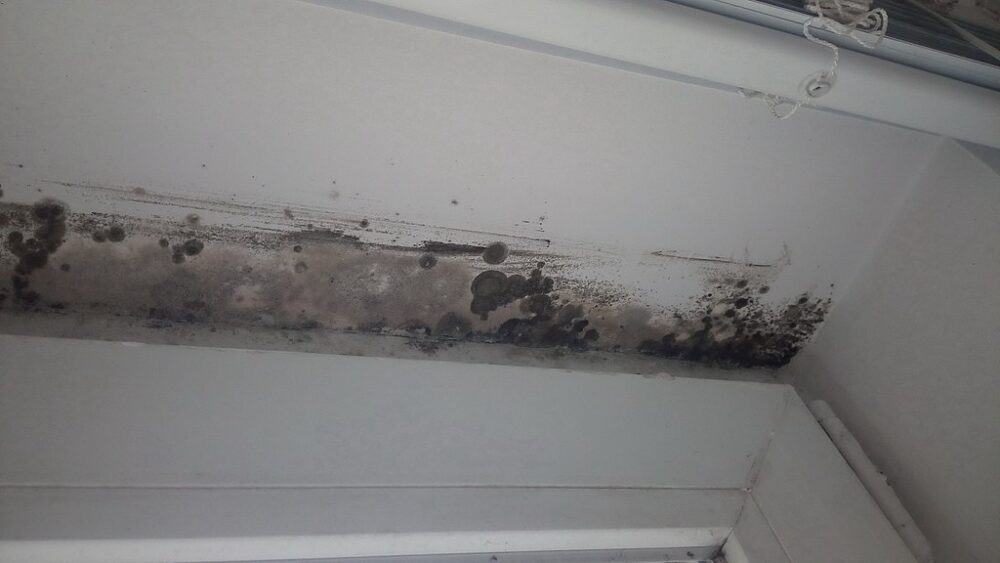Home structural repair
Table of Contents
Your home is more than just a place to live; a new home is an investment for your future. Below, we will explore the importance of home structural repair, common issues and signs of structural damage or problems and steps to address them effectively. It is crucial to ensure that the structural integrity of your home remains sound, as, over time, homes can develop issues that require attention and repair.
Why Is Home Structural Repair Important?

The structural integrity of your home is its backbone, providing stability and safety to you and your loved ones. Neglecting structural repair issues can lead to serious consequences, including the following:
Safety Hazards
When it comes to structural repair, safety hazards should not be taken lightly. While repairing and maintaining your home is necessary for its longevity, overlooking safety precautions can lead to accidents and injuries. One of the most common hazards during structural repairs is falls from heights. Whether you are climbing ladders or working on rooftops, this poses a significant risk that must be managed properly. Ensuring that you have the right equipment, such as sturdy scaffolding or harnesses, along with proper training on how to use them safely, is crucial in preventing potentially fatal falls.
Another often overlooked safety hazard is exposure to hazardous materials. Many homes built before the late 1970s may contain asbestos or lead-based paint, both of which pose serious health risks if disturbed without taking proper precautions. It’s essential to conduct thorough inspections before starting any repair work and consult a professional team if there’s a possibility of encountering these materials. Ignoring such hazards can result in long-term health issues for both homeowners and contractors alike.
Reduced Property Value
Homeowners are often invested in maintaining the value of their property, but what happens when unforeseen home structural elements come into play? These repairs can have a direct impact on property values. One fresh perspective to consider is that while these repairs may initially lower the value of your home, they could potentially increase its marketability in the long run. Homes that have undergone a necessary advanced structural repair may be seen as more reliable and attractive to potential buyers. Homeowners can view these repairs as a general rule an investment rather than a deterrent especially when work was completed by a structural repair specialist..
Furthermore, reduced property value due to structural repair should not always be viewed as negative. It presents an opportunity for homeowners who are looking for a fixer-upper or investors seeking properties with potential. A reduced property value allows buyers to negotiate prices favorable to them and provides room for improvement projects without overpaying initially. Savvy investors actively seek out homes in need of minor repairs or a common problem, specifically as they see an opportunity to add value through renovations once the work is completed.
Escalating Costs
Whether it’s a leak in the roof, a cracked foundation, or crumbling walls, a structural repair can quickly become a nightmare for our wallets. As homeowners, we often overlook the gradual wear and tear that occurs over time until these issues demand immediate attention – and money. The sad reality is that the cost of home repairs has been escalating at an alarming rate in recent years.
One reason behind this surge in costs is the increasing demand for skilled labor. With more homeowners investing in renovations and repairs, there simply aren’t enough qualified professional structural repair services to meet this demand. This shortage pushes wages higher, which ultimately gets passed down to us as consumers. Additionally, rising material prices further contribute to escalating costs. From lumber shortages due to increased construction activity to skyrocketing steel prices affected by global trade tensions – these factors create a perfect storm of inflated repair expenses.
Another culprit causing swelling expenses for homeowners is outdated building codes and regulations. As new safety standards are put into place across various industries, older homes may not comply with these requirements. Consequently, any necessary structural repairs must adhere to updated codes, which often involve costly modifications or complete overhauls of existing systems.
Common Signs of Structural Problems

Detecting structural repair issues in your home at an early stage is crucial for effective repair. Look out for these common warning signs:
Foundation Cracks
Foundation cracks in your home can be a cause for concern, as they indicate potential structural issues. While some hairline cracks may be harmless and due to the natural settling of the house, others can point to more serious problems that require immediate attention. It is important to understand the different types of foundation cracks in order to determine the appropriate course of action or major repairs..
One common type of crack is known as shrinkage crack, which occurs when concrete shrinks as it dries and cures. These cracks are usually small and less than an eighth of an inch wide. They are generally not a cause for concern but should still be monitored over time. On the other hand, a vertical or diagonal crack that is wider than an eighth of an inch can indicate more significant issues, such as foundation settlement or pressure from soil against the foundation walls.
If you notice any foundation cracks in your home, it is essential to consult with professionals who specialize in home structural repair. They will assess the severity of the crack and determine whether further investigation or a permanent solution is required. Remember not to ignore even seemingly insignificant cracks, as they could potentially lead to major structural damage if left untreated. Keeping your foundation strong and stable is crucial for maintaining a safe and secure home environment for years to come.
Uneven Floors
Uneven floors can be a potentially dangerous problem to deal with in your home structural repair process. While it may seem like an annoyance, it could be indicative of a larger structural issue that needs immediate attention. One common cause of uneven floors is foundation problems. Over time, soil shifting or settling can cause the foundation to shift or sink in certain areas, resulting in uneven floors throughout the house. This not only affects the visual appeal of your home but can also pose serious safety risks if left unaddressed.
Another culprit behind uneven floors could be poor construction or structural damage. When homes are not built on a level foundation or are subjected to excessive moisture or natural disasters, such as earthquakes or floods, it can lead to noticeable sagging or sloping floors. Ignoring these signs may worsen the underlying problem over time and potentially impact other parts of your home’s structure as well.
To ensure your safety and protect the value of your property, getting professional help for uneven floors is essential. Whether it requires leveling the foundation through piers and beam adjustment or repairing damaged floor joists, seeking expert advice will guarantee a long-lasting solution that will restore both stability and peace of mind to your home environment.
Sticking Doors and Windows
Sticking doors and windows can actually indicate larger structural problems within the home. When doors and windows stick, it could be a sign of foundation issues or settling, which can cause the framework to shift and become misaligned. By addressing these sticking points early on, homeowners can prevent further damage and ensure the longevity of their homes.
One common culprit for sticking doors and windows is humidity. Wood tends to expand in humid environments, causing doors and windows to become tight in their frames. This is especially true for older homes with wooden structures that have been exposed to years of fluctuating humidity levels. Using a dehumidifier or installing weatherstripping can help alleviate the problem by reducing moisture content in the air around your doors and windows.
Another often overlooked factor is poor maintenance. Over time, dirt, debris, and even paint buildup can impact how well your doors and windows function. Regular cleaning with mild soapy water, followed by lubricating any moving parts with silicone spray or light oil, should be part of your routine maintenance plan. By paying attention to these seemingly small details, you can keep your home’s structure in top shape while ensuring smooth functionality for both its inhabitants and its architectural elements.
Bowing or Leaning Walls
One primary factor contributing to bowing or leaning walls is inadequate drainage around the foundation. When water accumulates near the base of a building, it exerts pressure on the walls, eventually causing them to bow or lean. Another common cause is poor construction practices that fail to provide adequate reinforcement for load-bearing walls. Over time, these structures can succumb to external pressures like soil movement or shifting ground conditions.
Fortunately, there are several effective solutions available today for repairing bowing or leaning walls without breaking the bank. Carbon fiber strengthening systems have become increasingly popular due to their affordability and efficiency in reinforcing weakened areas and preventing further wall damage. Additionally, helical tiebacks—steel rods drilled horizontally through the foundation—help stabilize bowing walls by anchoring them deep within stable soil layers.
Sagging Rooflines
Many factors can contribute to a sagging roofline, including age, poor construction techniques, or natural disasters. Home structural repair experts emphasize the importance of addressing this issue promptly. A sagging roofline can lead to water damage, compromised insulation, and even potential collapse in extreme cases. It is crucial to consult professionals who can assess the extent of the damage and recommend appropriate repairs.
Adding further complexity to this problem is the variety of repair options available. From retrofitting trusses and installing additional supports to completely rebuilding sections of your roof structure, there are several solutions depending on the severity and cause of the sagging. Undertaking thorough research and seeking guidance from experienced contractors will ensure a proper assessment and tailored solution for your specific situation.
By understanding the underlying causes and available repair strategies, homeowners can make informed decisions that will restore both safety and beauty to their homes.
Musty Odors or Mold Growth
One of the most unpleasant and concerning issues that homeowners can face is a musty odor in their homes. This unwelcome smell is often an indication of mold growth, which can be a serious health hazard and cause significant damage to the structure of your home. While many people associate mold with visible signs like stains or discoloration on walls, it’s important to remember that mold can also grow behind walls and in hidden areas, making it difficult to detect.
When it comes to addressing musty odors and preventing further mold growth, home structural repair is essential. Repairing any water leaks or damage in your home’s foundation, plumbing system, or roof should be at the top of your priority list. Proper ventilation plays a crucial role as well since excess moisture trapped indoors can create an environment conducive to mold growth. Ensuring proper insulation around pipes and windows will help prevent condensation buildup and minimize the risk of future moisture-related issues.
Steps to Address Home Structural Repair
If you notice any of the warning signs mentioned above, it’s essential to take prompt action. Here are the steps to address home structural repair:
Professional Inspection
When it comes to structural repair, professional inspection is the key to ensuring your safety and avoiding costly damage down the line. While it may be tempting to take matters into your own hands or simply rely on a quick visual scan, a professional inspection offers a level of expertise that can make all the difference. These inspectors have undergone extensive training and have an in-depth knowledge of building codes and regulations. They know what signs to look for that indicate potential problems, even if they are not immediately visible.
One of the main advantages of hiring a professional inspector is their ability to uncover hidden issues that you may not even be aware of. They have access to specialized tools such as moisture meters and thermal imaging cameras, which can detect water damage or insulation problems that might otherwise go unnoticed. Even seemingly minor issues like cracks in the foundation or wear and tear on support beams can quickly escalate into major structural problems if left unchecked. By catching these issues early on, you can potentially save yourself from expensive repairs in the future.
Professional inspections also offer peace of mind when buying or selling a property. If you are purchasing a home, an inspection can help you identify any potential red flags before making such a significant investment. On the other hand, if you are selling your home, having proof of a recent inspection can reassure potential buyers about its overall condition and increase its market value.
Repair Plan
Based on the inspection, the professional will create a repair plan that outlines the necessary steps and estimated costs.
A well-thought-out repair plan ensures that all necessary repairs are done efficiently and effectively, minimizing further damage and preventing future issues. By assessing the extent of the damage, prioritizing repairs, and hiring reliable contractors, you can ensure that your home remains structurally sound for years to come.
One key aspect of a repair plan is accurately identifying the root cause of any structural issues. Identifying the underlying problem will not only address the immediate concerns but also prevent recurrence in the future. Additionally, it is crucial to prioritize repairs based on their urgency or severity. This approach allows homeowners to tackle pressing issues first while budgeting for less critical repairs over time.
Hiring reputable contractors is another vital step in executing an effective repair plan. It’s worth investing time and effort into researching different contractors’ qualifications, experience, and credentials before making a decision. Remember that choosing professionals with expertise in structural repairs will offer peace of mind knowing that your home is being handled by experts.
Taking proactive steps towards repairing your home’s structure not only enhances its value but also ensures your family’s safety and comfort for years to come.
Foundation Repair
Foundation issues can happen to anyone and at any time. It’s important to understand the signs of a failing foundation so that you can take action before the problem escalates.
One common sign of foundation problems is cracks in your walls or floors. These cracks may start out small but can quickly grow larger if not addressed promptly. Another sign to look out for is doors and windows that suddenly become difficult to open or close. This could be a result of the shifting and settling of your foundation, causing misalignment in your door frames and window sills.
Ignoring these warning signs can lead to more serious issues down the line, such as sagging floors, sloping walls, or even water damage. Investing in early foundation repairs will not only ensure the stability of your home but also save you from costly repairs in the future. Don’t wait until it’s too late–take proactive measures to protect your biggest investment and keep your home structurally sound for years to come.
Common solutions for foundation issues include underpinning, pier and beam repair, or wall bracing. The choice of repair method will depend on the specific problem.
Structural Reinforcement
Structural repair reinforcement is an essential aspect of home maintenance that ensures the longevity and safety of a property. By strengthening weak areas, such as walls, beams, or columns, through techniques like adding steel reinforcements or using high-quality construction materials, homeowners can prevent any potential collapse risks while improving the overall stability of their homes.
One interesting point to consider about structural reinforcement is its potential for enhancing the visual appeal of a property. While it may seem counterintuitive to think that fortifying a structure could actually improve its appearance, modern techniques have made it possible to incorporate reinforcement strategies seamlessly into architectural designs. Carbon fiber wrap technology allows for discreetly reinforcing weakened walls without altering their visual integrity. This not only serves the purpose of strength but also leaves room for creative design possibilities in both residential and commercial settings.
Waterproofing
If moisture is a contributing factor to the home’s structural repair problems, addressing waterproofing issues is crucial to prevent future damage. Many homeowners focus on fixing visible issues like cracks in the walls or leaky roofs but fail to address the root cause – water infiltration.
One fresh perspective on waterproofing is its role in maintaining a healthy living environment. Water intrusion not only damages the structure of your home but also provides a breeding ground for harmful allergens like mold and mildew. These can trigger respiratory problems and allergies, jeopardizing the health of you and your family. By investing in proper waterproofing methods, such as sealing basements or installing drainage systems around your property, you are not only safeguarding your home’s integrity but also ensuring a healthier indoor environment.
Another important aspect to consider when it comes to waterproofing is its impact on energy efficiency. Water infiltration can result in excessive dampness, which negatively affects insulation materials like fiberglass or cellulose. This diminishes their ability to provide sufficient thermal resistance, thereby increasing their energy consumption for heating or cooling purposes. By prioritizing proper waterproofing techniques throughout your home, you’re not only preventing moisture-related damage but also maximizing energy-efficiency which translates into long-term cost savings.
Regular Maintenance Inspection
After a structural repair has been completed, regular maintenance and inspections can help prevent future structural problems. The importance of regular inspections cannot be stressed enough when it comes to structural reinforcement. Opting for periodic assessments by qualified professionals can help identify early warning signs and address them promptly before they turn into major issues. By doing so, you not only safeguard your home but also gain peace of mind knowing that you have taken proactive steps towards securing your investment in the long run. Remember, prevention is always better than cure when it comes to ensuring the safety and durability of your beloved abode.
Conclusion
Home structural repair is not just a matter of aesthetics; it’s about ensuring the safety, value, and longevity of your home. If you suspect structural problems in your home, don’t hesitate to consult a professional and take action promptly. By doing so, you’ll be investing in the future stability and comfort of your home.




